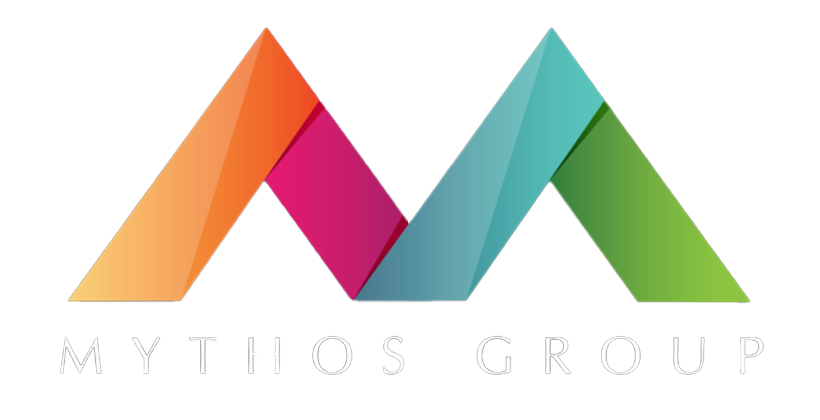JPMorgan Chase decommissioned 2,500 legacy applications and generated $1.5 billion in AI business value. Commonwealth Bank reduced customer scam losses by 50% through consolidated AI-powered security architectures.
While most enterprises waste $18 million annually on unused software, market leaders generate billion-dollar AI returns through strategic elimination, not accumulation.
The greatest barrier to AI transformation success isn’t insufficient investment in machine learning or shortage of data science talent. It’s organizational chaos masquerading as technological sophistication. Companies achieving breakthrough AI results systematically eliminated technological complexity before deploying artificial intelligence at scale.
The Foundation-First Reality
Knowledge workers operating within fragmented ecosystems lose 23 minutes with each context switch between an average of 11 daily applications, experiencing cognitive performance degradation equivalent to marijuana impairment. This systemic inefficiency renders AI algorithms fundamentally unreliable because machine learning requires consistent, complete datasets to generate trustworthy strategic insights.
Executive interviews consistently reveal a startling reality across industries: organizations dedicating 40% of knowledge worker time to system navigation and data reconciliation rather than strategic value creation. Your highest-paid talent spends nearly half their time wrestling with technological complexity instead of driving competitive advantage.
When marketing reports 15% conversion rates while sales claims 12% for identical periods, leadership loses the unified analytical foundation essential for AI-driven insights. This fragmentation creates what systems theorists term “digital quicksand” where each new tool addition paradoxically reduces organizational agility while creating the illusion of enhanced capability.
The strategic insight that separates market leaders from complexity managers: AI multiplication effects on inefficient processes generate diminishing returns, while AI applied to clean, unified workflows creates exponential competitive gains. Organizations achieving breakthrough AI results follow systematic approaches that address technology, governance, and culture simultaneously.
The Five-Pillar Consolidation Framework
Sustainable digital discipline emerges only through coordinated evolution across technology architecture, governance frameworks, and cultural adaptation simultaneously. The strategic framework addresses this through five integrated components:
Comprehensive Technology Audit forms the foundation. Most organizations discover they lack basic awareness of their technology footprint, with departments independently purchasing solutions that create expensive overlap. The audit reveals shadow IT purchases that exist outside formal procurement processes, creating security risks and budget drain.
Successful organizations document every tool, license cost, usage metrics, and primary users across all departments. Rather than accepting self-reported metrics, they extract actual usage data to identify tools with low adoption rates. They systematically examine functional overlap where different departments solve identical problems with different tools.
Core Platform Architecture evaluates technology based on ecosystem compatibility rather than feature demonstrations. This approach prioritizes tools that enhance organizational capability through integration over impressive standalone functionality that creates additional silos. The architecture must support future growth without requiring constant system additions.
Organizations choose platforms based on their ability to communicate seamlessly with existing systems. They select one primary tool per function while resisting local optimization preferences that fragment organizational capability.
Unified Data Strategy represents the most critical element because data fragmentation becomes
exponentially more damaging during AI deployment. Machine learning algorithms amplify whatever data quality exists within systems, making unified data strategy mission-critical for competitive advantage.
Success requires establishing unified data flows accessible across all business functions. Organizations must create consistent KPI definitions that transform metric debates into strategic discussions. They build clean, consistent datasets that enable reliable algorithmic insights.
Cross-Functional Governance accelerates good decisions while preventing poor ones by creating lightweight but disciplined processes. This governance makes smart technology choices automatic and poor decisions difficult to justify while maintaining necessary business agility.
Organizations establish cross-functional committees with sufficient authority to evaluate technology requests based on strategic alignment and integration capability. Cooling-off periods for non-essential software purchases filter out impulse decisions while maintaining responsiveness for legitimate business needs.
Cultural Integration ensures technology consolidation succeeds through organizational change management rather than purely technical exercises. Success requires repositioning simplification as competitive enhancement rather than capability reduction.
Organizations frame consolidation as competitive advantage creation while investing in comprehensive training programs that demonstrate productivity improvements within simplified ecosystems. They build algorithmic utilization capabilities within existing systems rather than expanding software footprints.
[These five pillars work as an integrated system: Comprehensive Technology Audit provides the foundation, Core Platform Architecture and Unified Data Strategy create the technical framework, while Cross-Functional Governance and Cultural Integration ensure sustainable organizational adoption.]
How Global Leaders Execute Consolidation
Netflix: Microservices Architecture Enabling Global AI Personalization
Netflix executed strategic transformation from monolithic architecture to distributed microservices specifically to enable AI-driven personalization for global subscriber populations. This architectural decision prioritized business requirements over technical preferences, recognizing that personalized content delivery at global scale required unified data access for machine learning algorithms.
The consolidated architecture enables AI systems processing over 230 billion hours of content annually, with recommendation algorithms driving over 80% of viewer engagement. Netflix’s recommendation engine saves the company over $1 billion annually.
DBS Bank: $780 Million AI Value Through Data Unification
Singapore’s DBS Bank systematically unified fragmented systems into centralized governance architecture. This strategic consolidation enabled AI deployment at enterprise scale, delivering SGD 780 million in economic value comprising revenue enhancement and productivity improvements.
The unified foundation enabled digitally-engaged customer growth from 42% to 60% while allowing AI systems to identify over 95% of non-performing loans three months before credit stress manifestation. This predictive capability enabled proactive intervention strategies preventing millions in potential losses.
Maersk: Unified Platform Transformation For AI-Enabled Logistics
Global logistics leader Maersk executed comprehensive digital platform consolidation to create unified foundations for AI integration, systematically replacing legacy technologies with future-ready architecture. The company projects AI will handle 80% of logistics tasks within five years.
AI-enabled robotic solutions already achieve threefold sorting speed improvements and 33% increases in inventory pickup efficiency. The unified platform eliminates data silos that previously prevented comprehensive operational intelligence, enabling AI systems to optimize global shipping routes and predict port congestion patterns.
Siemens: Industrial AI Foundation Through Data Consolidation
Siemens developed an “Industrial Foundation Model” trained on 150 petabytes of verified engineering data, enabling AI systems that understand manufacturing requirements at unprecedented sophistication levels. The $10 billion Altair acquisition represents strategic consolidation designed to make advanced simulation and AI capabilities accessible across organizational scales.
This unified platform enabled Rolls-Royce to consolidate multiple legacy document systems, creating production copilots that interpret telemetry data error messages and generate comprehensive maintenance guides automatically.
The Competitive Mathematics
The competitive landscape has reached an inflection point where digital discipline fundamentally determines organizational trajectory. Companies maintaining clean digital foundations deploy AI solutions with significantly greater speed and efficiency, iterate more rapidly through development cycles, and compound competitive advantages through each successful implementation.
Executive interviews consistently reveal that the most capable AI scientists, data engineers, and technology leaders increasingly select unified environments over fragmented architectures, preferring to focus on breakthrough innovation rather than system integration complexity. Organizations still managing digital sprawl find themselves competing for second-tier talent.
The mathematical realities underlying competitive positioning become increasingly apparent as AI capability gaps widen. Companies dedicating substantial resources to managing technological complexity cannot achieve the strategic focus necessary for AI leadership. Each quarter spent on system reconciliation represents competitive positioning lost permanently to organizations building unified AI capabilities.
Strategic Implementation Timeline
The strategic choice confronting contemporary enterprises has become binary: execute comprehensive digital simplification initiatives immediately or accept strategic subordination to competitors who recognized this transformation requirement first. Market forces now make technological consolidation inevitable rather than optional.
Organizations beginning strategic consolidation initiatives position themselves to capture disproportionate market advantages, while those delaying action will find themselves acquiring expensive technological capabilities from early movers rather than developing internal competitive advantages. The window for strategic repositioning narrows as network effects accelerate first-mover benefits.
The companies scaling AI successfully won’t be those with the most sophisticated tool collections. They’ll be those with the most coherent digital foundations that enable artificial intelligence to deliver reliable, scalable business value.
Digital consolidation isn’t just essential for AI success – it’s the strategic discipline that separates tomorrow’s market leaders from today’s complexity managers.







